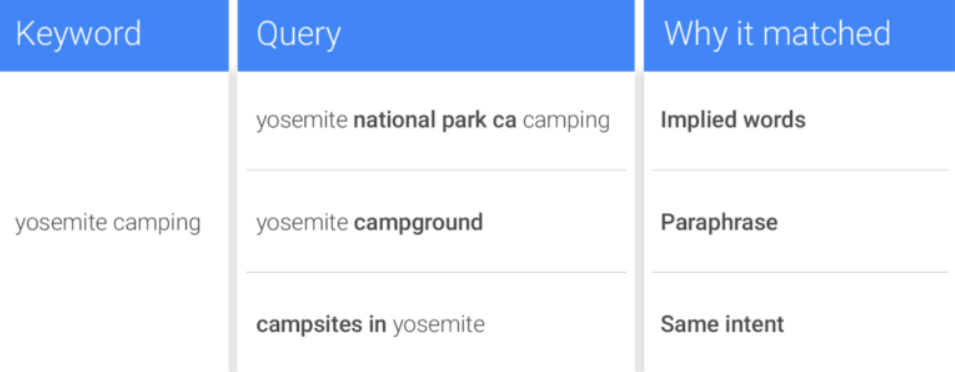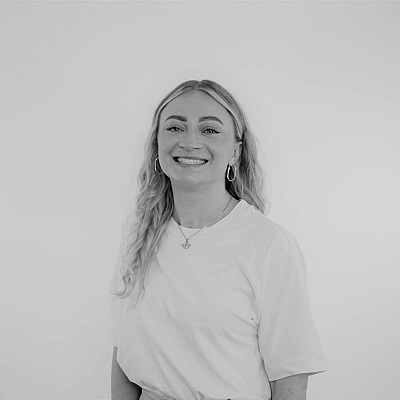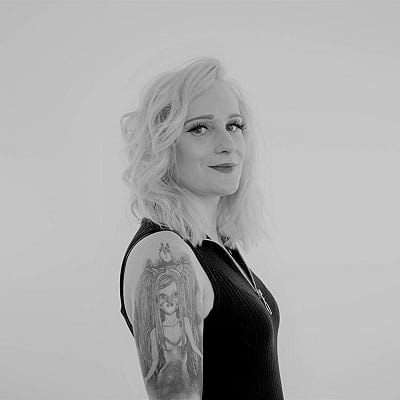3 Reasons Your Website Traffic Is Shrinking And What You Can Do About It
Once upon a time driving traffic to your website was easy if you had the right content. You could use channels such as Facebook and Google Ads to promote your content and – providing you had enough of it – you’d get great results organically too.
As Mike Finn discusses in his How Online Search Has Changed video, things used to work a little like this:
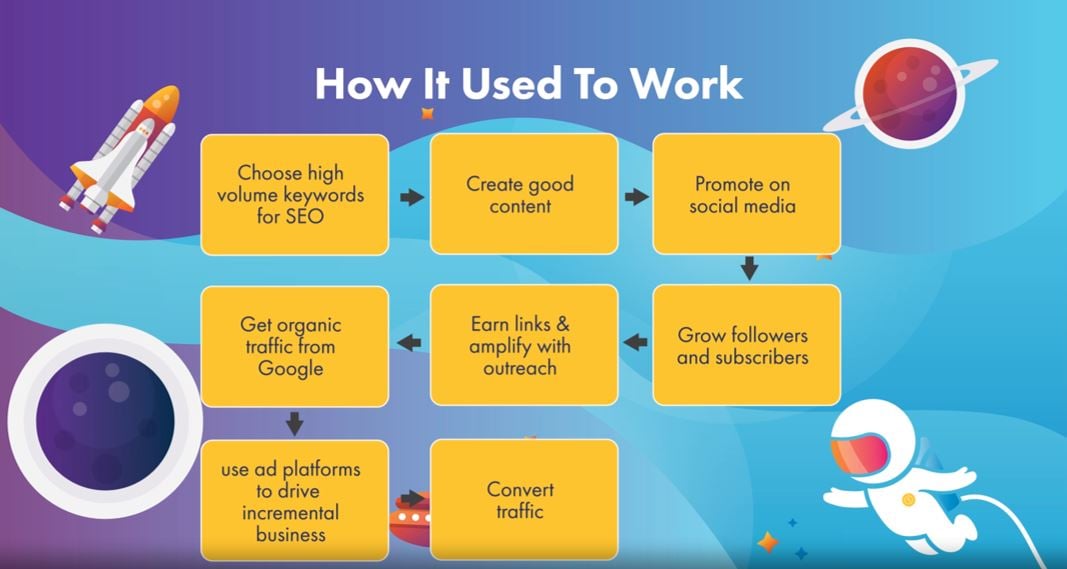
A solid process of choosing relevant keywords, creating great content, growing your followers and using ads to drive traffic to your website was the holy grail – the promised land.
But today it’s a very different picture.
You may find that:
- Your keywords send less traffic
- your great content is no longer good enough
- your social platforms have seen diminishing engagement
- your paid ads no longer convert or provide the ROI they once did.
It’s not all doom and gloom for marketers but it's certainly more difficult – and here’s why…
1. Google Sends Less Organic Traffic
The make-up of Google search results has changed dramatically in the last five years. Back in Q1 of 2016 54% of Google searches resulted in organic clicks. By Q2 in 2019 that had dropped to just 46%.
Why?
Google wants to provide the quickest, most relevant information to its users. That involves including more information in the search engine itself. Enter position zero search results.
Position zero search results are search results that appear before the first organic listing. Commonly known as featured snippets, these search results aim to answer the user’s question in the search engine itself.
This could be in the form of a paragraph, a numbered list or a knowledge graph.
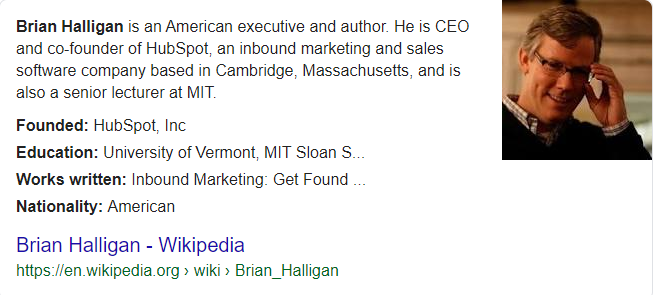
Paragraph SERP feature
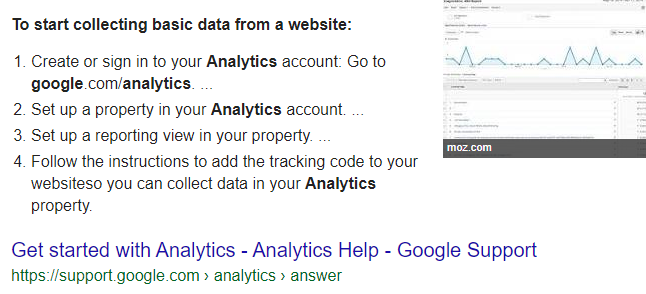
Numbered list SERP feature
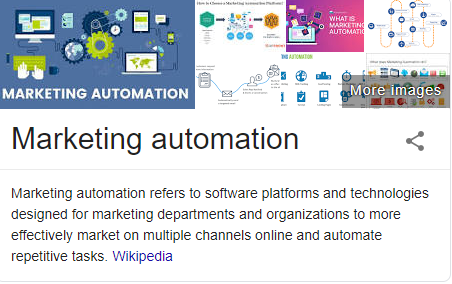
Knowledge graph SERP feature
So how does this affect the traffic coming to your website?
Position zero results reduce (and in some cases even prevent) the need for a user to click through to the website. While this is great for the user (every click matters), it’s not so great for your website. Especially if you don’t hold that all-important featured snippet position.
On average 31% of desktop searches are made up of no click results. However, they make up 56% of mobile searches!
No wonder you’ve noticed a drop in organic traffic!
It’s not all bad though.
While taking up a no click position may lead to decreased traffic, it also allows you to:
- Occupy more SERP space. As position zero takes up more space in search engines, it gives you an opportunity to dominate more of Google’s real estate. That means you gain exposure and push your competitors further down the listings.
- Rank for voice search queries. Search engines use position zero results for voice search answers and it’s predicted that more than half of online searches will be made by voice by the year 2020. So, if you want a chance of appearing in search results past 2020, get SERP optimising!
Don’t fight position zero results – fight for position zero results! Optimise your content to ensure you appear for the questions your audience has. Structure your content to make is easy for Google to understand and rank. And above all, use simple, clear language to answer search queries.
Carrying out a Marketing Opportunity Analysis can be a great place to start when reviewing your organic search rankings - you can find out more about that here!
Google Features
Google increasingly uses its own properties to answer search queries. The likes of YouTube, Maps, Hotel Listings and Job Listings all make more of an appearance now than they ever have before.
Try searching for a hotel in your area…
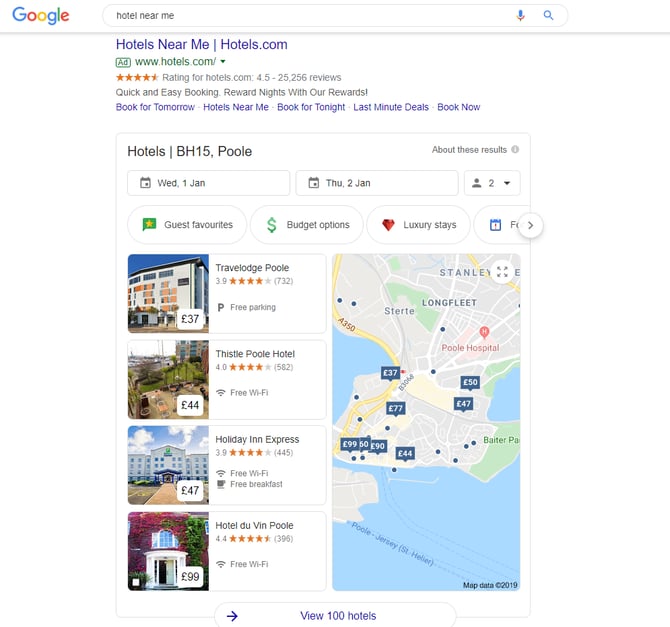
You’ll see (among the many, many ads) that the map feature appears as the first organic listing. You can click through, see hotel reviews, look at prices and even choose your stay date all within the search engine!
This means you need to make your website and content fit Google’s mould. Be present in relevant searches by:
- optimising your Google My Business page
- using platforms such as YouTube
- creating a multitude of content in different formats.
2. Social Media Channels Don’t Refer Traffic Anymore
Facebook was once a key player in referring organic traffic to our websites. However, research found that organic Facebook organic reach dropped 9.5% between 2012 and 2014.
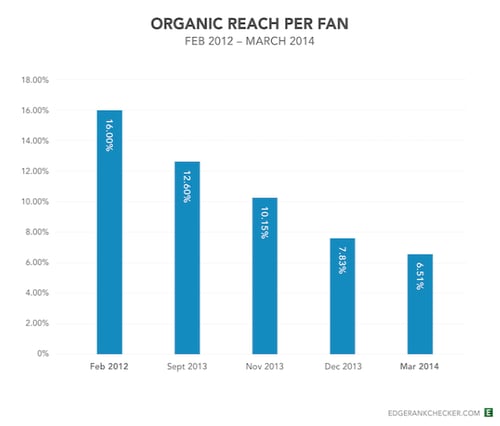
Image from Edge Rank Checker
Then, in 2016 Facebook’s algorithm changed to prioritise content from people over pages. This again was an aim to make the platform more enjoyable for users so they could see more updates from friends and family – and fewer from businesses.
However, this seems to have had a rolling effect. Research by Search Engine Journal shows that 64% of businesses saw a decrease in Facebook traffic between 2018 and 2019 with only 11% seeing an increase.
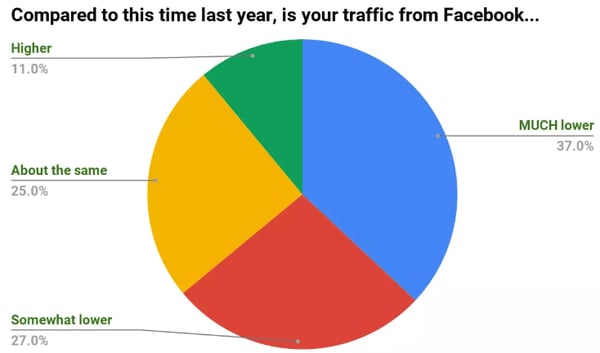
Facebook also wanted to show more content that encouraged meaningful interactions between people. The more engagement a post has the more interesting it must be, right?
So, if you want your Facebook page to appear on the main feed, you need to show content that gets people going, makes people laugh and above all, makes people want to share it with their friends.
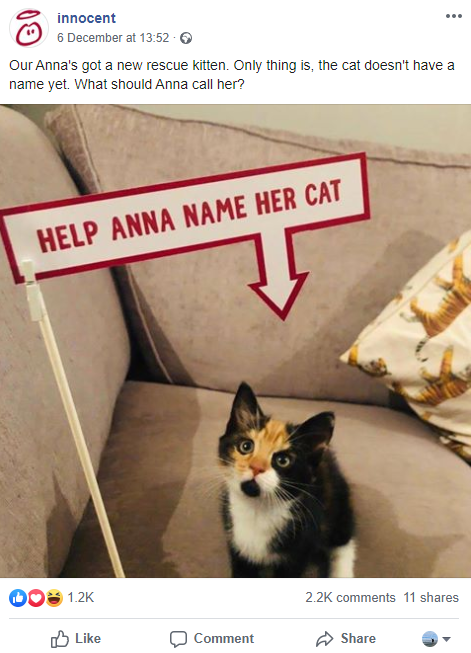
Innocent Smoothies is a great example of a brand that gets its followers engaged. Its content is very rarely product-focused. Innocent shares jokes, user generated content and brilliant images which always boast thousands of shares and hundreds of likes and comments.
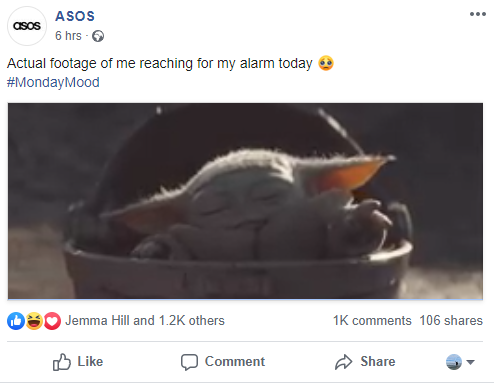
ASOS is also brilliant at creating relatable, humorous content that’s easy to share and like. With reams of Facebook users tagging their friends it’s hardly surprising the brand gets thousands of likes and shares on its content.
Like Facebook, LinkedIn’s algorithm has changed significantly in recent years. So you’ve likely seen a decrease in organic reach from the platform.
As LinkedIn has become more widely used its feed has become more competitive. The likes of business ads, LinkedIn house ads, organic posts and videos mean everyone’s feeds are cluttered.
Your content is harder to see in an ocean of marketing messaging and self-congratulating content. This has affected even the highest of influencers. It’s reported that even Neil Patel’s videos have seen a 50% drop in views!
However, there are ways of giving your content the best possible chance!
Try to keep your content in LinkedIn. Create your articles in the platform and make your video native to LinkedIn. There is evidence to suggest that LinkedIn prefers to keep users within its own platform – so bring your content to the platform!
Leveraging your network is also a great way to increase the organic reach of your LinkedIn content. Ask your staff to like, share and comment on content to improve its reach.
Back in 2017 we started doing this ourselves and the results were clear – 25-30 staff all with 300+ connections can go a long way to increasing the reach of your organic content!
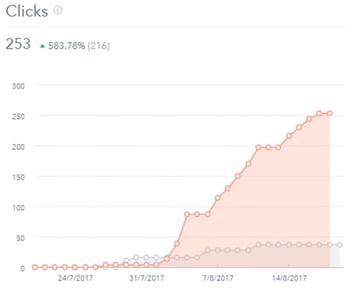
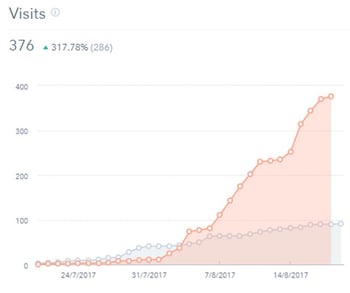
3. More Adverts, Less Control
If you use paid advertising and have done for a while, you may notice your ROI diminishing. Once upon a time, you could rely on paid ads to drive relevant traffic to your website and (providing you had a decent landing page) convert that traffic.
Of course, this is still possible but you do have to work your paid search quite hard.
For example, some of the control we once had over exact match phrases is no longer there. Instead of exactly matching words used within a search query to your sponsored keyword it now matches the intent and the words used.
Image from Search Engine Land
This hugely broadens the potential search queries that could trigger your ad. So exact match keywords behave much more like broad match keywords now.
Google’s advertising platform has also increased the types of ads available to marketers. With expanded text ads, shopping ads, video ads and soon-to-be hotel ads the possibilities are endless.
While this has been great for opening doors for different types of businesses to use Google Ads, it also means the ad space is more crowded.
What do you think happens when competition increases and the types of ad diversify?
The cost per click (CPC) increases – this has been happening across the last 10 years.
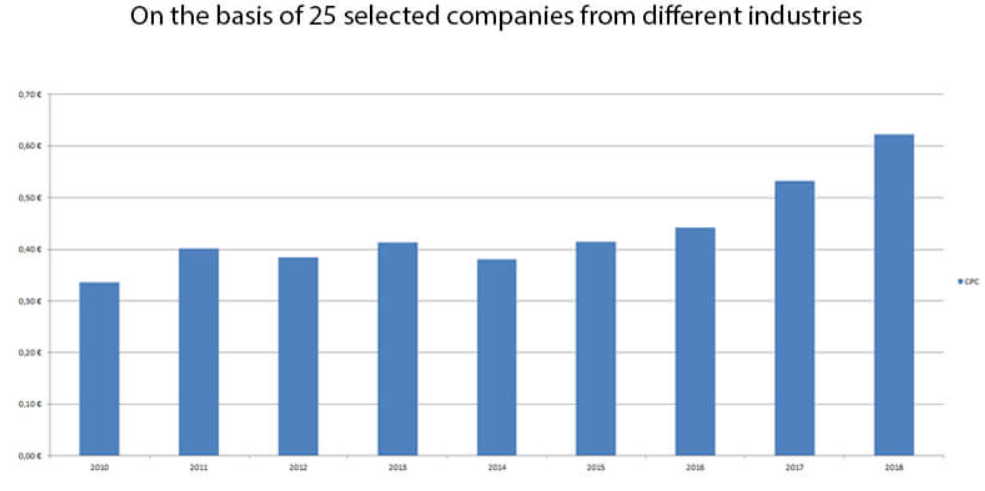
Image from Search Engine Land
The reason you’re seeing less ROI through your paid search is because the developments Google has made to improve the platform have also made it a more competitive landscape.
You only have to make a simple search to see this in action. Take the below search for ‘basketball shoes’ for example.
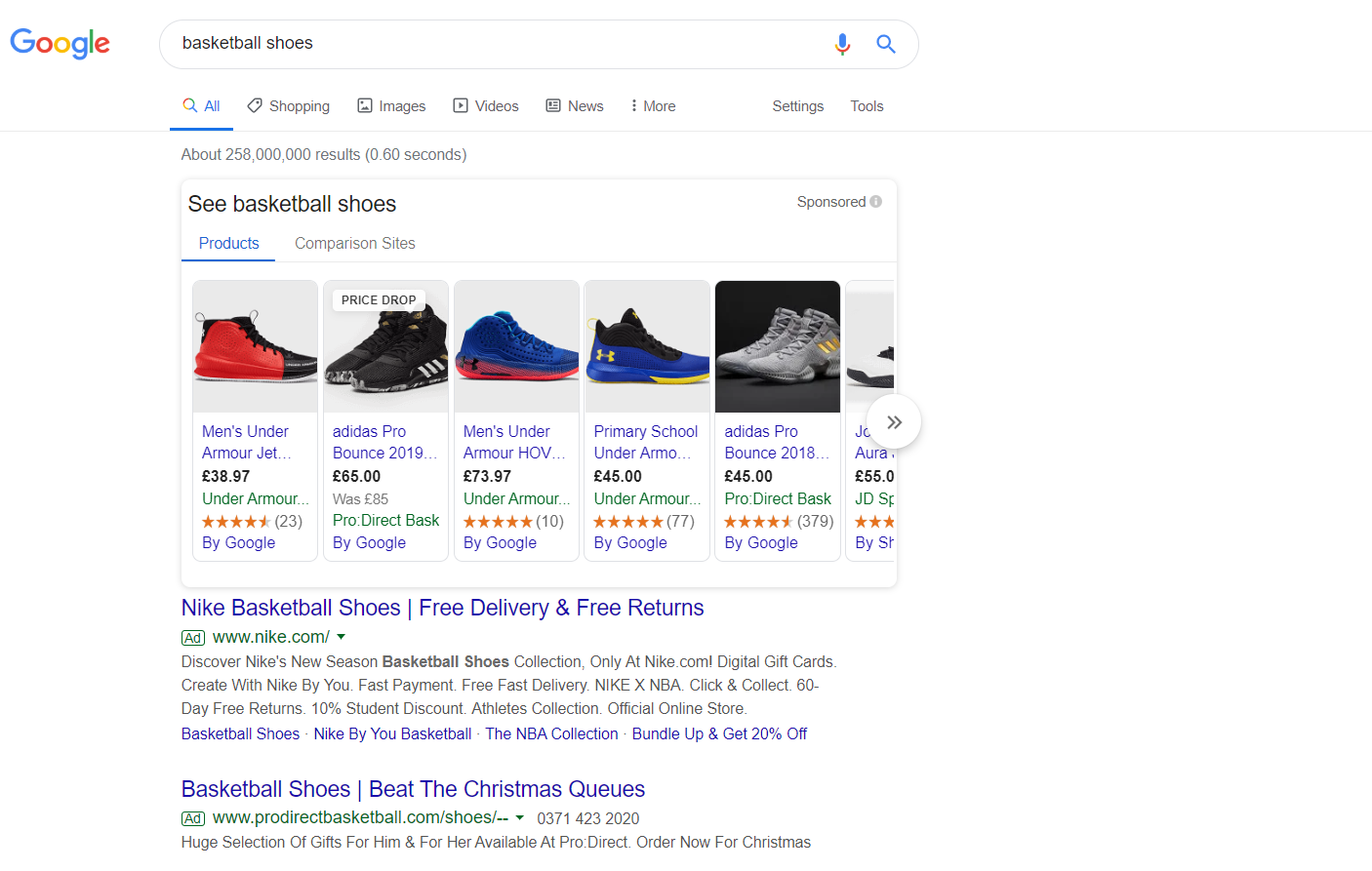
There are at least five different advertisers and two ad types shown above the fold alone demonstrating just how competitive Google ads can be now.
This doesn’t mean you should stop using Google Ads though...
It can still be a brilliant platform, providing you with converting traffic and above all ROI but you need to manage it tightly.
Try different types of adverts, split test your ads and make sure you prioritise profit over traffic growth. You should always be completing an analysis of your digital marketing efforts, and tweaking your approach in response.
A lot of these changes are down to an influx of new competition which has forced platforms such as Google and Facebook to develop new features.
Knowing what your competitors are up to and having a clear strategy for your digital marketing with this is mind is key to success in 2020 and beyond.
Allow us to put your competitors under the microscope and show you how they’re advertising, how they compete for organic rankings and where you sit in this competitive marketplace.
Get your free competitive report today!
